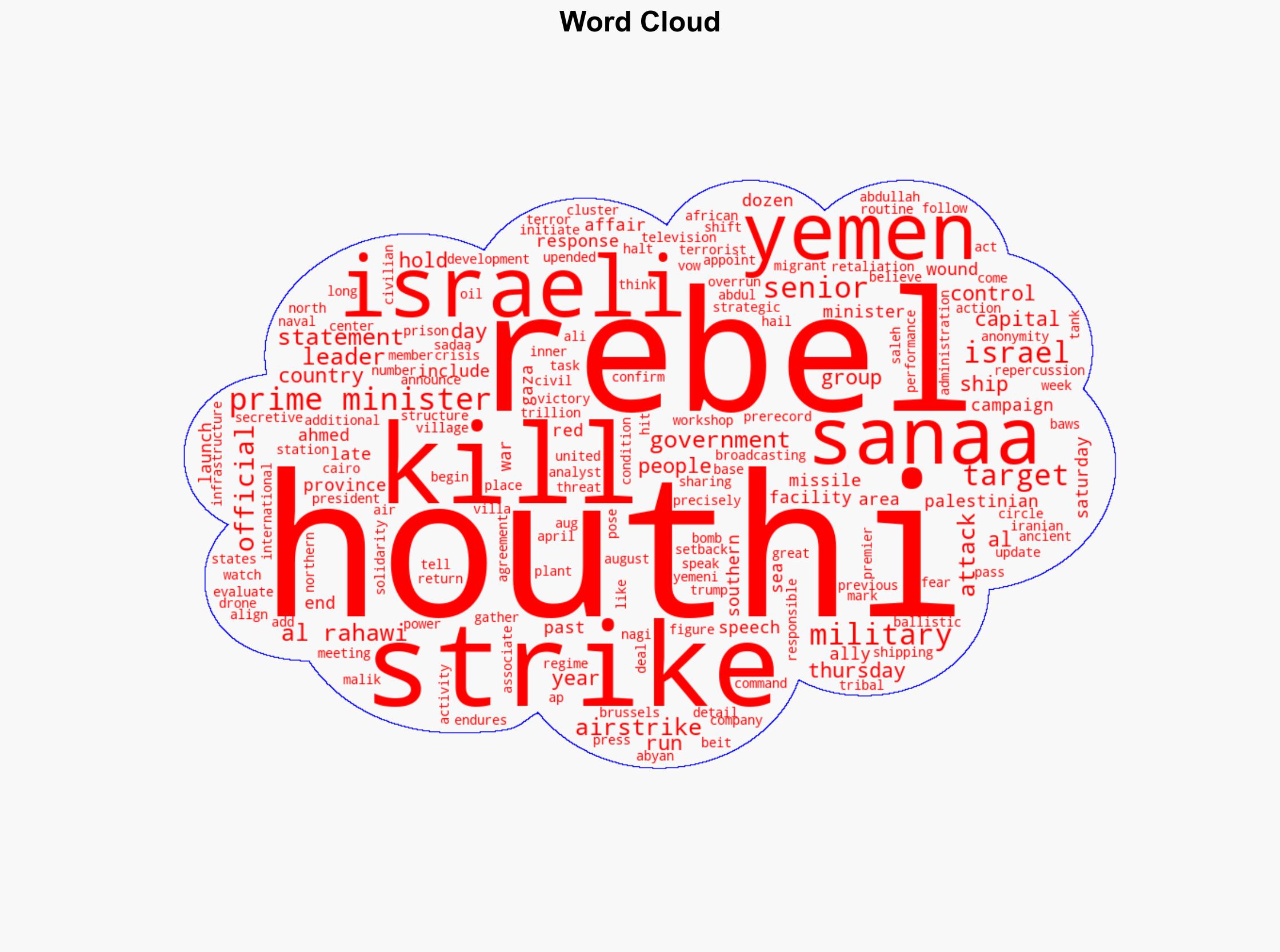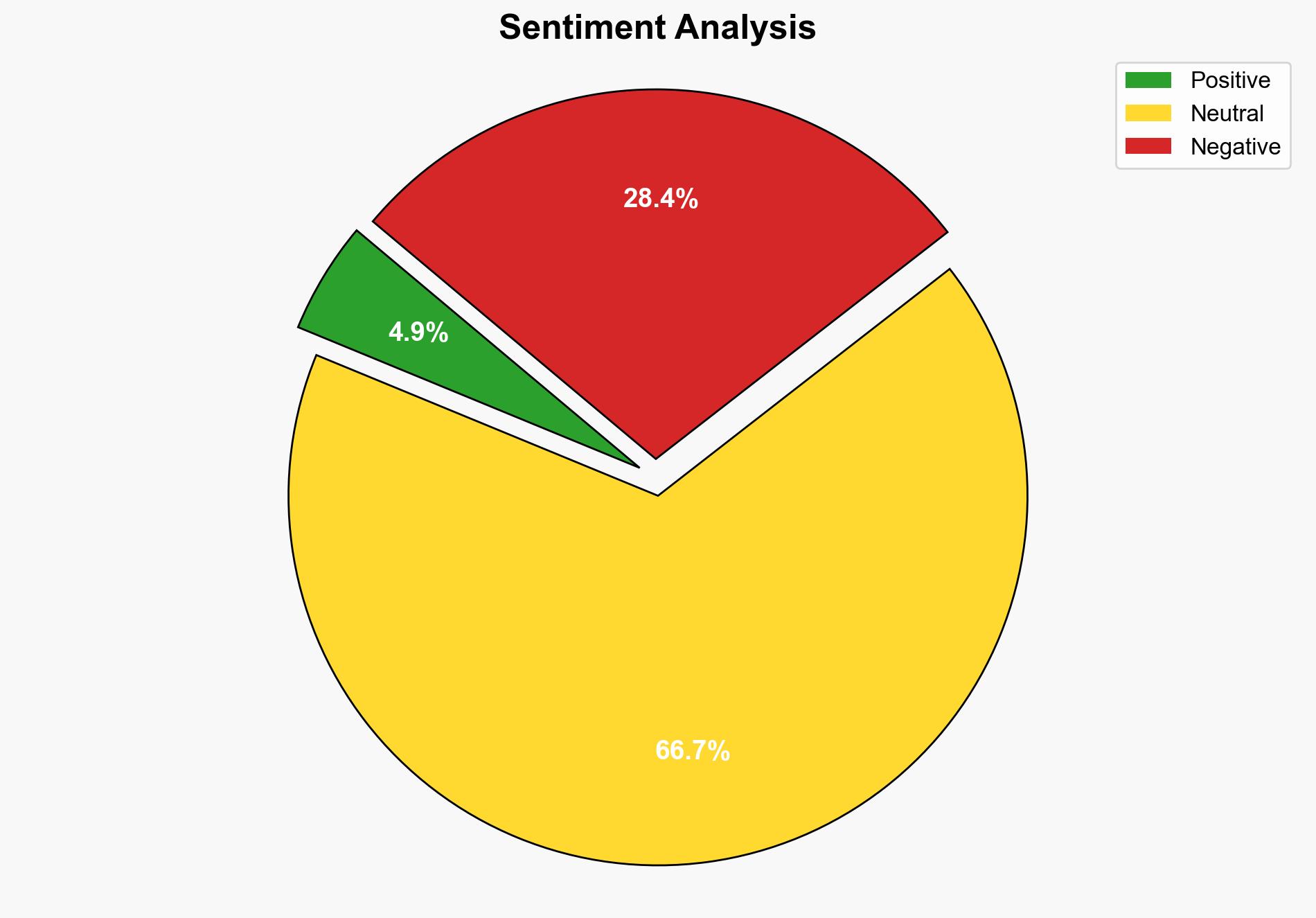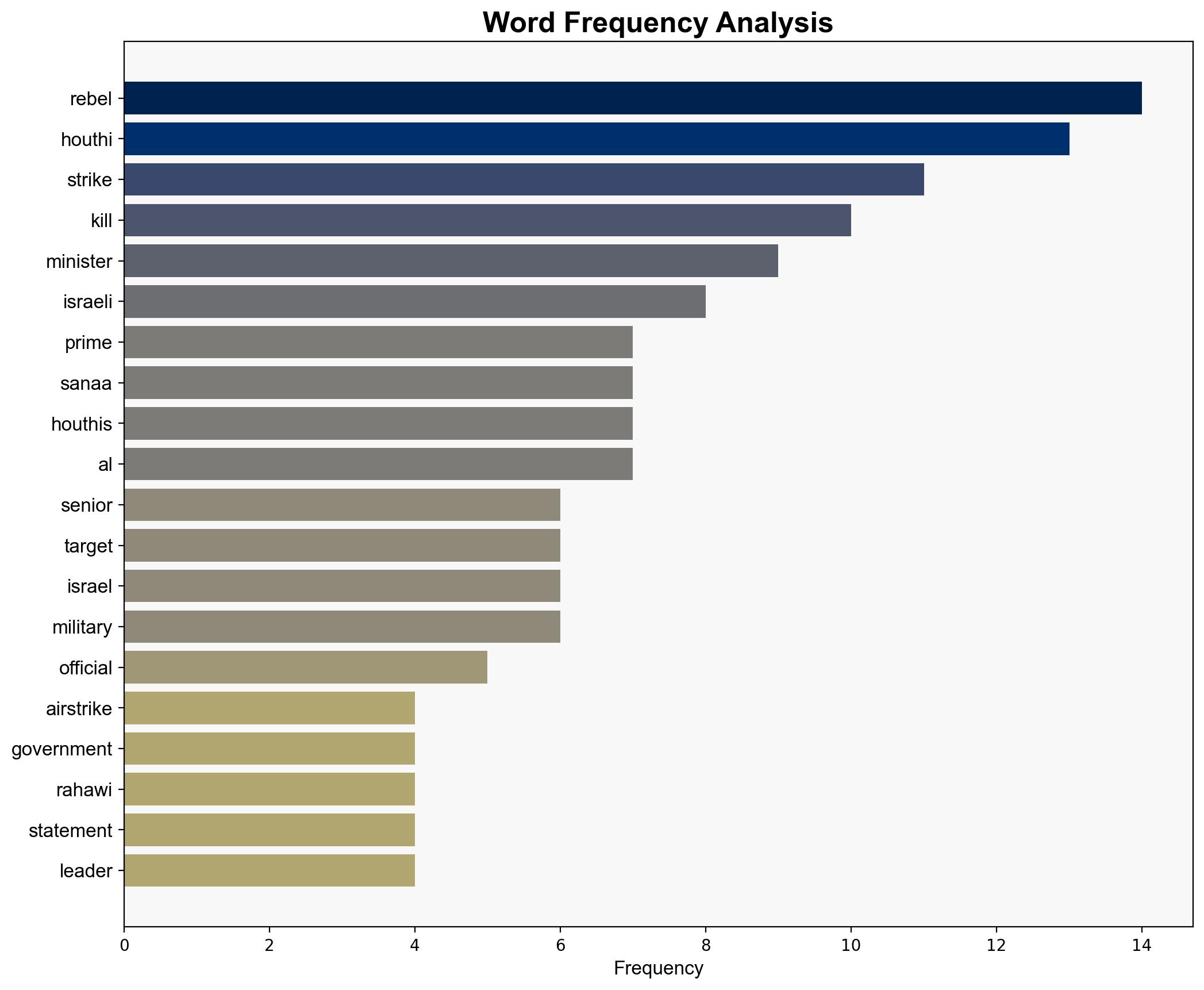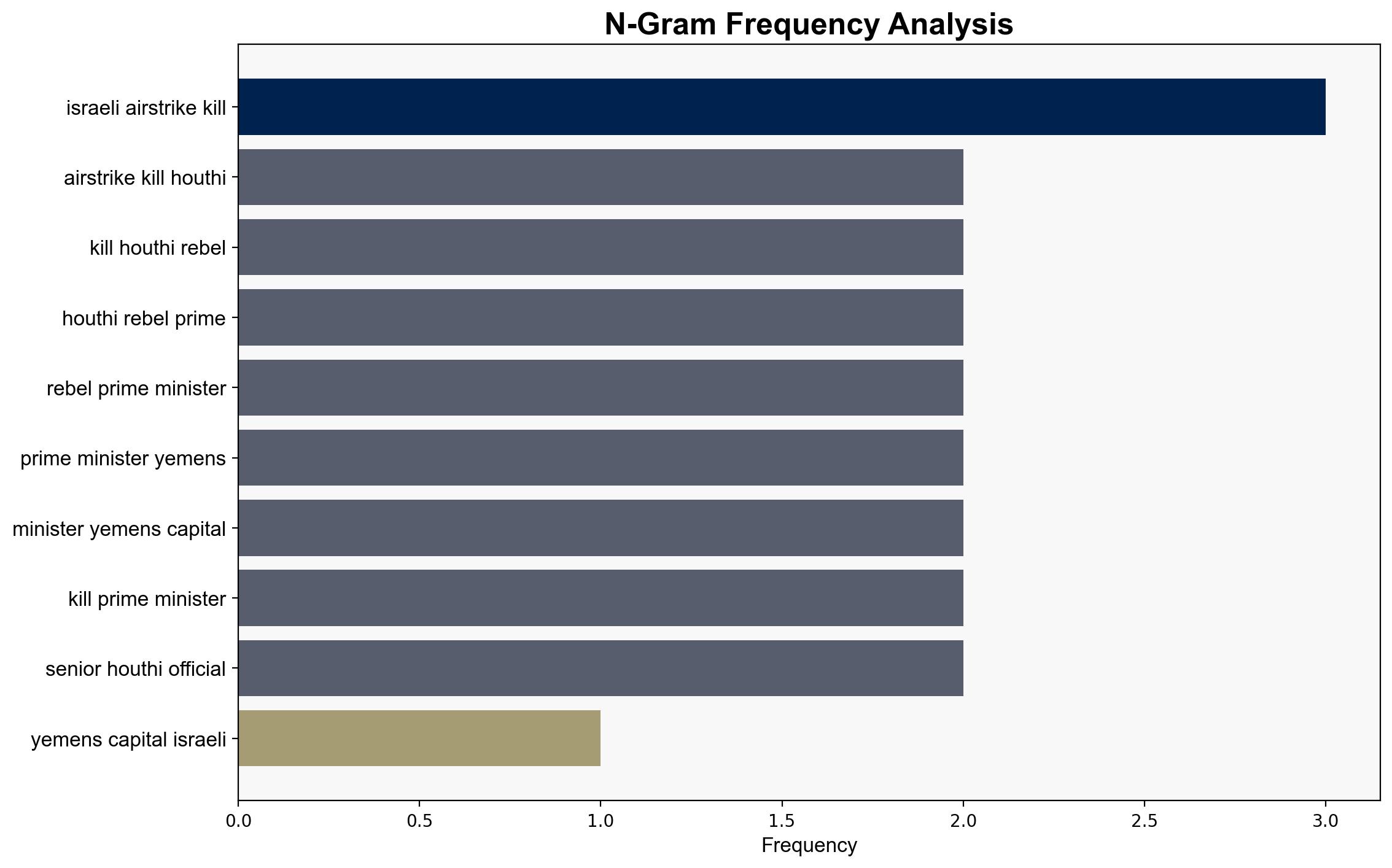Israeli airstrike kills Houthi rebel PM Ahmed al-Rahawi in Yemen – Associated Press
Published on: 2025-08-30
Intelligence Report: Israeli airstrike kills Houthi rebel PM Ahmed al-Rahawi in Yemen – Associated Press
1. BLUF (Bottom Line Up Front)
The most supported hypothesis is that the Israeli airstrike targeting Ahmed al-Rahawi was a strategic move to disrupt Houthi leadership and deter future attacks on Israeli interests. Confidence in this hypothesis is moderate due to the complexity of regional dynamics and potential misinformation. Recommended action includes monitoring Houthi retaliatory capabilities and enhancing regional alliances to mitigate backlash.
2. Competing Hypotheses
1. **Hypothesis A**: The airstrike was a calculated effort by Israel to eliminate a key Houthi leader, thereby weakening the group’s command structure and reducing its ability to conduct operations against Israeli and allied interests.
2. **Hypothesis B**: The airstrike was primarily a retaliatory measure in response to recent Houthi missile and drone attacks on Israeli assets, aiming to deter future aggression by demonstrating military capability and resolve.
Using the Analysis of Competing Hypotheses (ACH) 2.0, Hypothesis A is better supported. The airstrike aligns with a broader strategic pattern of targeting leadership to destabilize adversarial groups, as evidenced by previous strikes on Houthi infrastructure and leaders.
3. Key Assumptions and Red Flags
– **Assumptions**: It is assumed that the airstrike was based on accurate intelligence regarding al-Rahawi’s location and his role within the Houthi leadership. Another assumption is that this action will significantly impact Houthi operational capabilities.
– **Red Flags**: The possibility of misinformation or propaganda from either side could skew the perceived impact of the strike. The lack of independent verification of al-Rahawi’s death and the circumstances surrounding it is a concern.
4. Implications and Strategic Risks
– **Geopolitical Risks**: The strike could escalate tensions in the region, potentially drawing in Iranian interests given their support for the Houthis.
– **Retaliation**: There is a risk of retaliatory attacks by the Houthis, possibly targeting Israeli or allied interests in the region, including shipping lanes in the Red Sea.
– **Economic Impact**: Disruption of shipping routes could have significant economic implications, given the volume of goods passing through the Red Sea.
5. Recommendations and Outlook
- Enhance intelligence-sharing with regional allies to preempt potential retaliatory actions by the Houthis.
- Strengthen maritime security measures in the Red Sea to protect shipping lanes from potential Houthi attacks.
- Scenario Projections:
- **Best Case**: The strike significantly weakens Houthi leadership, reducing their operational capacity.
- **Worst Case**: Escalation leads to broader regional conflict involving Iranian proxies.
- **Most Likely**: Temporary increase in hostilities, followed by a period of recalibration by the Houthis.
6. Key Individuals and Entities
– Ahmed al-Rahawi
– Abdul Malik al-Houthi
– Yemeni President Ali Abdullah Saleh (ally of the Houthis)
7. Thematic Tags
national security threats, counter-terrorism, regional focus, geopolitical strategy





